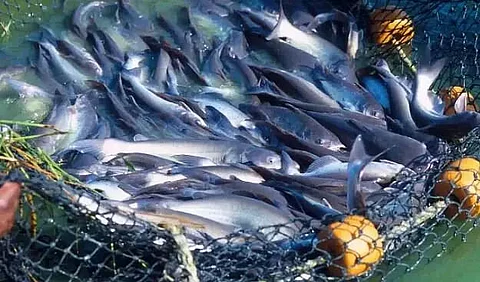
- Home
- Live Blog
- Breaking News
- Top Headlines
- Cities
- NE News
- Sentinel Media
- Sports
- Education
- Jobs

A small news item on the fifth page of the Sunday edition of this newspaper has attracted the attention of many discerning readers. Those fond of fish has found it particularly attractive because it is about the Silghariya, a local fish species found only in a few rivers of Assam. The news item from Jamugurihat says that the presence of the Silghariya in the Jia-Bharali river has attracted tourists in large numbers in recent weeks. While this particular fish is called Silghariya because it is at home in rivers which have beds of stones (as in the Jia-Bharali, and the upper reaches of Burhi-Dihing), its scientific name is Labeo dyocheilus and is known as 'Brahmaputra labeo' in English. As has been mentioned in the news item, the delicious breed of fish comes out to become visible only during gloomy days, and normally remains confined to their typical hideouts in spaces of the stones and rocks of the riverbed. Thousands of visitors throng Jia Bharali to have a view during gloomy days. It is worth mentioning that Assam's rivers – the Brahmaputra with its 104 tributaries and the Barak with its several tributaries – are home to at least 165 fish species, several of which are endemic only to Assam. There are some rivers/tributaries which are known particularly for certain species of fish. The Kakodonga river which divides Jorhat and Golaghat districts, for instance, has the tastiest Borali fish. Similarly, the Sessa near Dibrugarh is known for the best Assamese Pabha fish. But what is of concern is that increasing pollution has caused serious disturbance to the fish and other aquatic species of most rivers of Assam. The 264-km Jia Bharali, which originates in the upper Himalayan range at an elevation of 5400-m, and is known as Kameng in Arunachal Pradesh, has been facing major pollution in a particular five-km stretch between Miripathar and Kolabari in the Sonitpur district. Though the Government of Assam constituted a River Rejuvenation Committee in 2018 in compliance with a direction of the National Green Tribunal, not much is immediately known about what the Committee has achieved so far. But, all said and done, the Silghariya must be protected, as it comes under Goal No 14 of the UN Sustainable Development Goals (SDG), one that pertains to "Life below water".